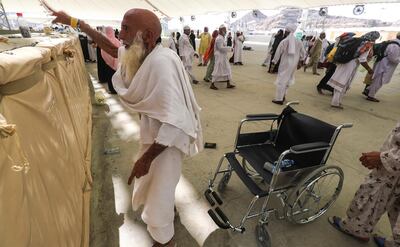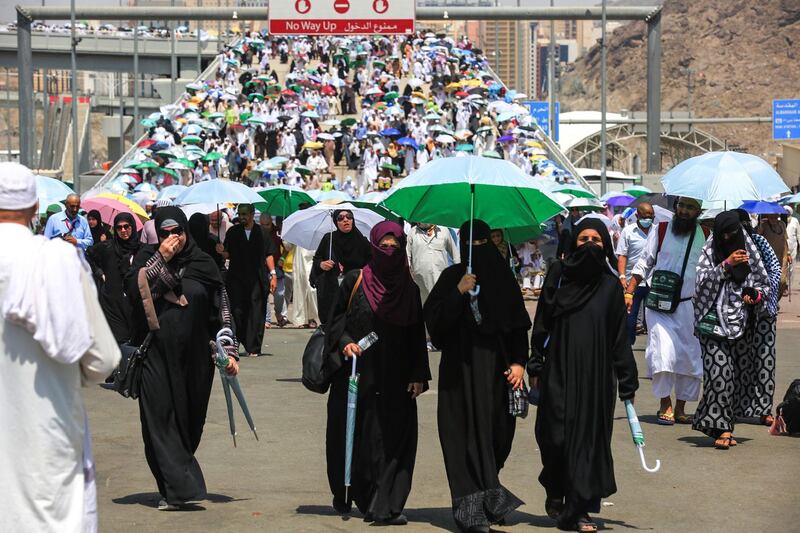Exhausted, delirious and on the brink of collapse, an elderly man with a red beard stumbles into a makeshift clinic on the northern side of Mina camp, a vast cluster of tents. It's midday in Makkah and the scorching sun beats down on the millions of pilgrims performing Hajj.
Two Saudi women rush to his aid. They hold him by his arms and prop him down onto a chair - he dips in and out of consciousness.
"Hajji, Hajji, are you ok? What's your name?" a third woman asks as she fans the man. It's severe heat stroke.
Most of the pilgrims who visit the clinics scattered throughout Mina on the second and third day of Hajj do so as a result of heatstroke. Temperatures rise to 40 degrees Celsius and many see themselves caught under the midday sun with hours of walking ahead.
________
Read more:
What I learnt on Hajj: it’s no picnic, but then it was never meant to be
Beyond the Headlines podcast: The view from Hajj and a Rohingya refugee update
_________
A team of volunteer medics and doctors, however, is always on site and quick to react.
Back in the tent the women give the elderly man some water, a quick mist shower and a wheelchair to guide him into the room where he's connected to an IV drip.
“The first day is typically calm, but it’s on the last two days where we really pick up the pace, we have a lot to do and the patients keep coming in,” said Manal Al Monshi, who is in charge of the volunteers.
#كن_عونا #العالم_في_قلب_المملكة pic.twitter.com/nWKhxQCHUy
— كن عوناً (@HajVolunteer) August 22, 2018
Kun Awnan - or "join together' - a Ministry of Hajj and Umrah endeavor, is in its second year of a fully-fledged medical programme allowing Saudi youth to volunteer their medical and first aid expertise during Hajj. The programme is not limited to the makeshift clinic. For 72 the clinics stay open and volunteers take to the streets of Mina to check on the health of the pilgrims.
"We've got a 24 hour patrol going on throughout the Mina camp, teams of two go out into the streets and tend to those in need of medical assistance," said Ms Al Monshi.
Any sign of distress is dealt with on the spot and those with more serious problems are taken to the clinic or transported to hospitals.

"We have an escalation system in place, and we're in contact with the Saudi Red Crescent to transfer cases we can't handle," explained Ms Al Monshi.
The work is grueling, and at time dangerous, as the volunteers are exposed to a host of diseases. The mothers among the volunteers leave their children at home in order to lend their help during the four grueling days.
"It's our privilege to be serving these Hajjis, it's something that I can't even explain in words, how happy it makes me," Mawada Afif, a resident doctor in Makkah said.
Ms Afif plans to be back again next year: "if God is willing".





